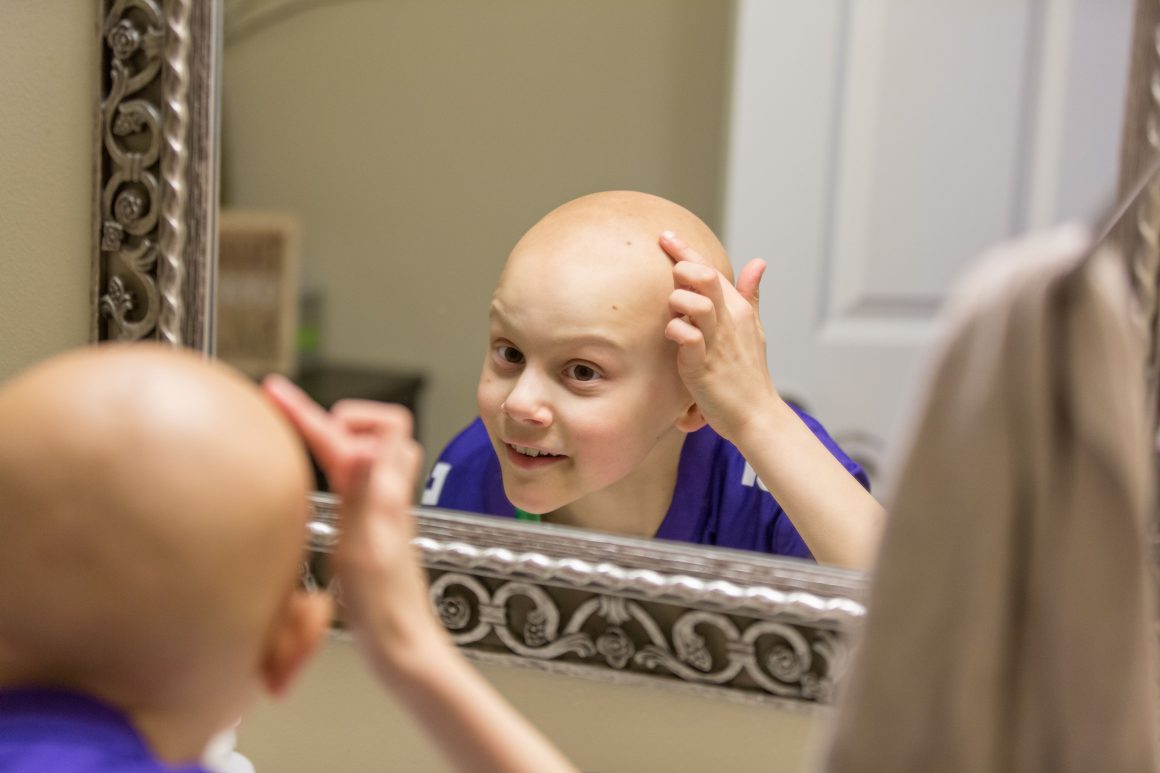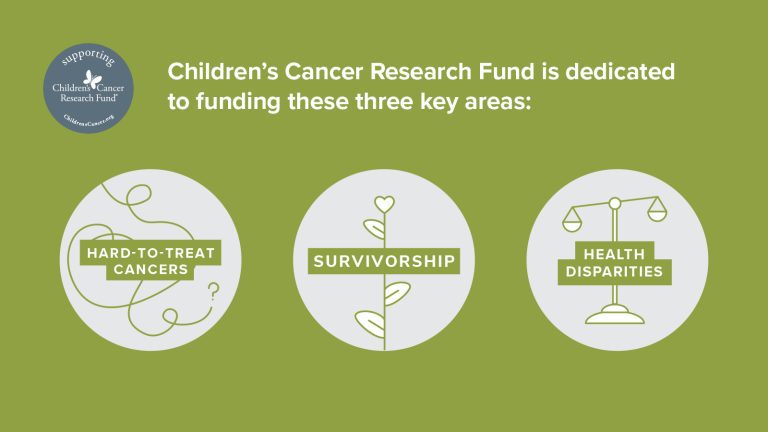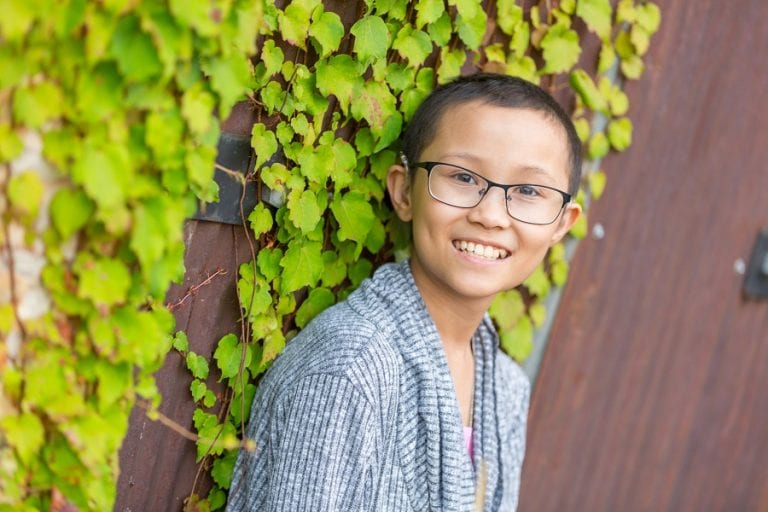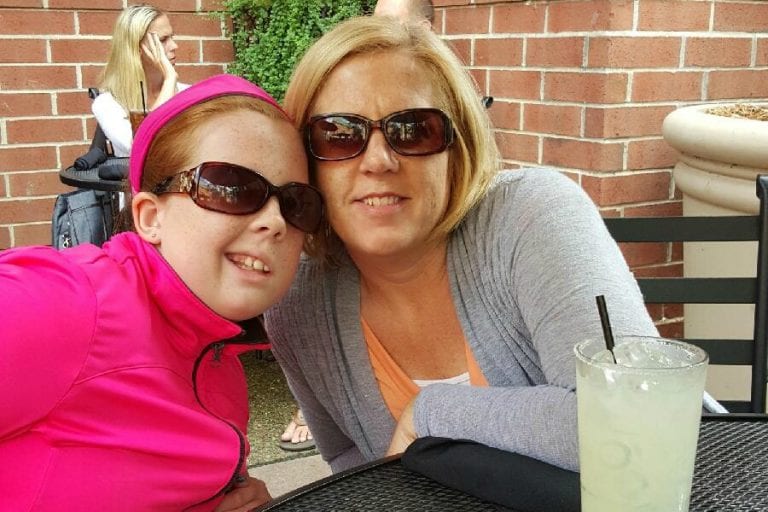Logan Spector, PhD, from the University of Minnesota calls Ewing sarcoma a “spotted zebra” because it looks and behaves unlike any other type of cancer. It behaves differently at different stages of development, and it can even appear differently within the same patient. Still, Spector and other ambitious researchers in the field continue to hunt for answers to unlock better treatments for this elusive foe.
Support from Children’s Cancer Research Fund helped Spector and his team secure a multi-million-dollar grant from the National Institutes of Health, allowing them to make great strides toward understanding Ewing sarcoma. The key mechanisms that Spector and his team are unraveling include:
- How do Ewing sarcoma cells develop and behave? Spector and his team are using unique mouse models developed at the University of Minnesota to answer this question. They’re focused on the gene EWS-FLI1, an oncogene that affects the functioning of thousands of different genes. Spector calls EWS-FLI1 a “Frankenstein gene” because it is the “inappropriate repair” of two broken genes, and it produces a protein that changes what other genes do.
- What is the “cell of origin” of Ewing sarcoma? This is the biggest mystery of the disease that has yet to be uncovered. If solved, it could offer clues that help researchers find better ways to treat Ewing sarcoma in kids.
- Why are there such significant differences in how Ewing sarcoma appears in different populations? As an epidemiologist, Spector is studying how and where Ewing sarcoma presents across different populations and ancestries. This is helping him pinpoint the DNA changes that allow Ewing sarcoma to develop.
Understanding how the immune system “sees” Ewing sarcoma after DNA damage
In 2018, CCRF granted an Emerging Scientist Award to Kelly Bailey, MD, PhD, at the University of Pittsburgh, to study how various cell groups within Ewing sarcoma tumors respond differently to chemotherapy and identify compounds that might make tumor cells more responsive to immunotherapies. Dr. Bailey says this grant was a “career launching point” that allowed her to bring a new perspective to Ewing sarcoma research.
She developed a new kind of mouse model in which she equips mice with human immune systems so she can better study how Ewing sarcoma interacts with immune cells. Dr. Bailey is investigating the impact of agents on NF-kB signaling in Ewing sarcoma cells that have varying levels of the EWS-FLI1 fusion oncoprotein. Her goal is to identify logical DNA damaging/immunotherapy agent combinations to better treat aggressive Ewing sarcoma.
Griffin, 10 Years Later
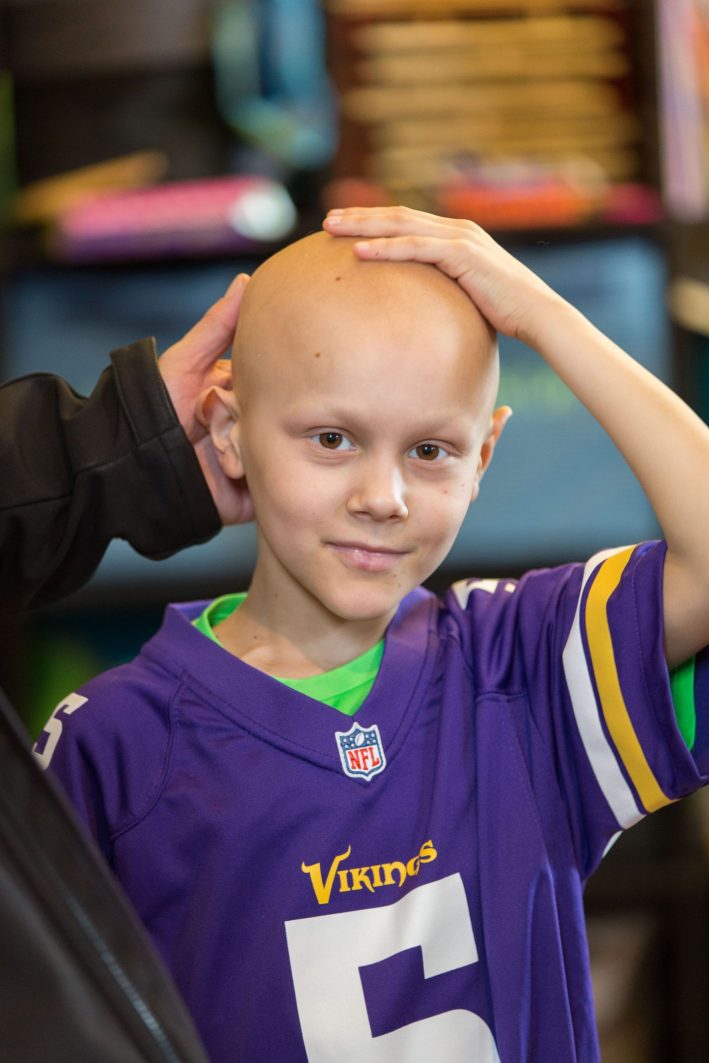
Griffin, a senior in high school, is a multi-sport athlete: captain of his school’s football and baseball teams and a guard on the basketball team. You’d never guess that just over a decade ago, doctors discovered a tumor in Griffin’s pelvis the size of a baseball.
“He was diagnosed with Ewing sarcoma, and I knew we were dealing with a beast of a cancer,” said his mom, Jill.
Griffin’s treatment 10 years ago involved infusions of six different drugs, one of which was a trial therapy. These therapies saved Griffin’s life – something Jill, will never take for granted.
“Having the eyes behind the microscope and the minds working towards a cure be the same doctors that would care for my son brought us a sense of confidence,” she said.
While he did face some scary moments during treatment like infection and surgery, Griffin made it through and is now on the other side of cancer.
“That doesn’t mean life is normal for us, even to this day,” said Jill. “Some of the chemo drugs he took could cause heart damage, kidney failure and cancer. We aren’t living in fear, but we are aware of these potential complications. It doesn’t ever go away for us.”
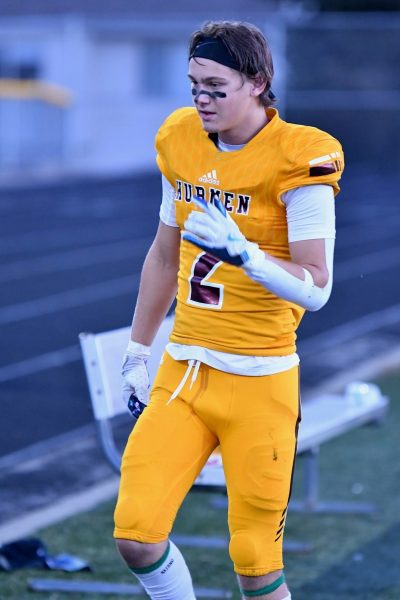 Last summer, Griffin, now 18, called his mom while he was on a trip to Hawaii to ask her if he could get a tattoo. Jill immediately said yes – because during the heaviest days of his treatment, she didn’t know if he’d ever be old enough to get one.
Last summer, Griffin, now 18, called his mom while he was on a trip to Hawaii to ask her if he could get a tattoo. Jill immediately said yes – because during the heaviest days of his treatment, she didn’t know if he’d ever be old enough to get one.
This year, roughly 200 children will be diagnosed with Ewing sarcoma, just like Griffin was. But because of you, researchers have been collecting samples, building models and running tests every day of those last 10 years, learning from kids like Griffin to help the kids who come after him.
Your support of childhood cancer research has never been more vital.
Support from our CCRF community has allowed us to invest in researchers who are early in their careers, enabling them to take risks and approach problems differently. That’s exactly what Dr. Bailey did – and what she’s training the next generation of researchers to do. But she’s worried: a lack of available funding could mean her research loses steam before it gets to kids fighting cancer. Cuts to federal funding mean research grants will be harder to secure, and without funding, researchers must abandon potentially lifesaving projects – and promising young students will choose a more stable field.
“As a physician scientist, you only really have 20-30 years to really delve in,” Dr. Bailey said. “You’re always looking behind you to pass the baton. The early career time is a critical period for establishing yourself and getting a consistent funding stream going. Nationally, there is a strong need to support the early careers of up-and-coming scientists and ensure the future of pediatric oncology research.”
Make a gift today. Visit childrenscancer.org.

